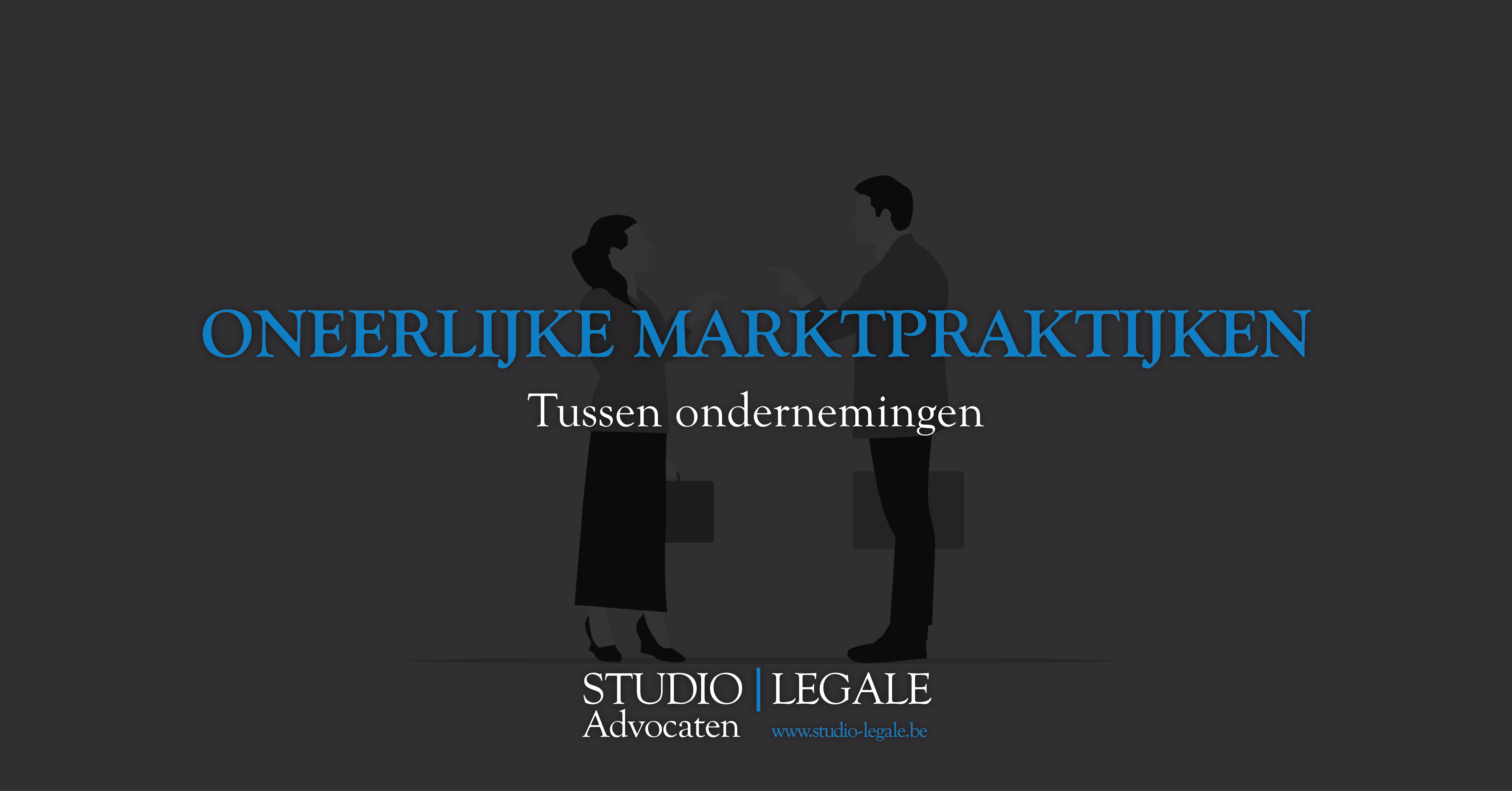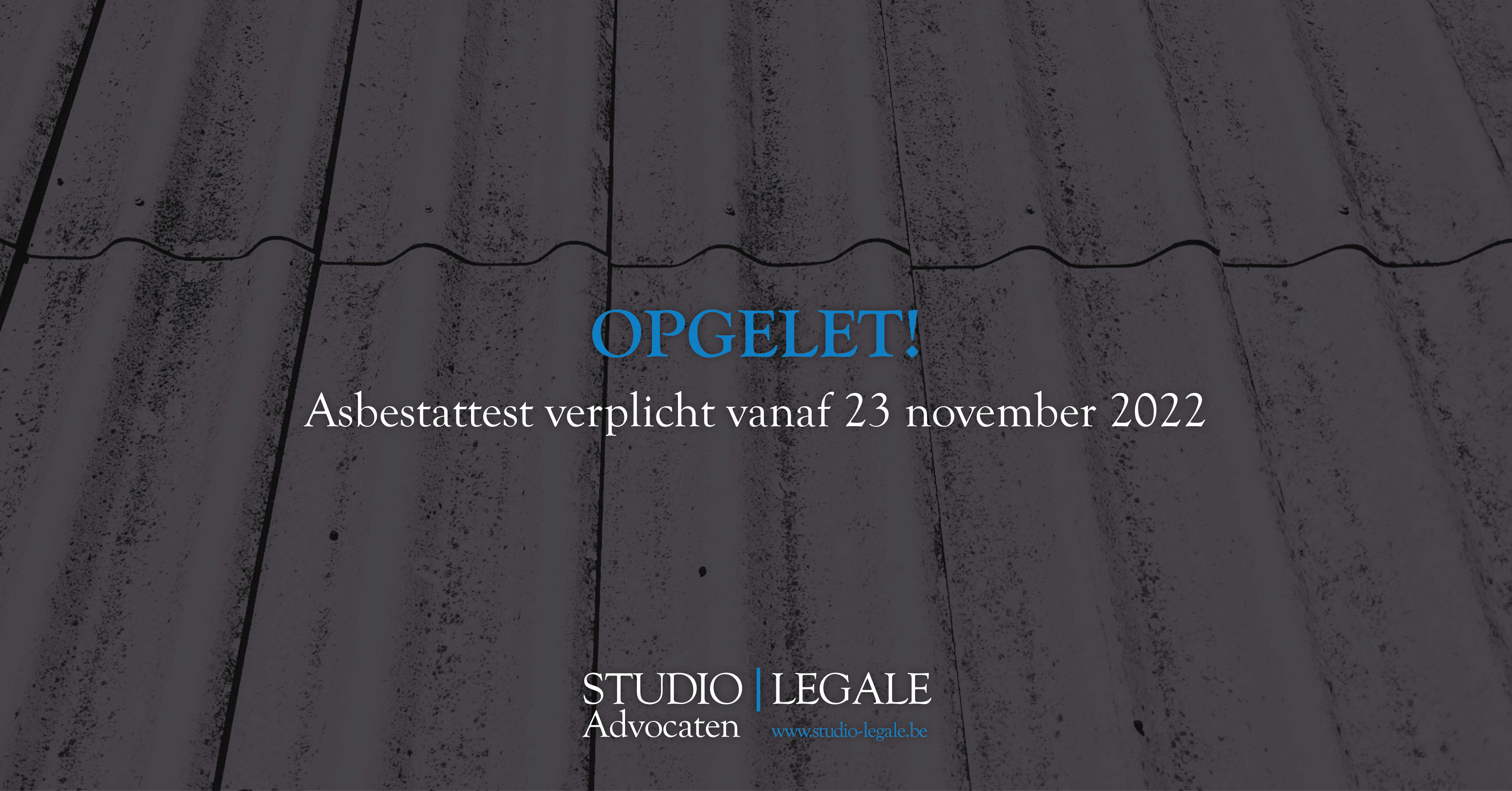In our previous article[1], you could already read that companies are prohibited from committing acts contrary to fair market practices that harm or may harm the professional interests of other companies. The concept of unfair market practices has many applications. In a recently published judgment[2], the Antwerp Court of Appeal sheds light on what should be understood by the concept of unfair market practices.
Article VI.104 of the Economic Code (hereafter: WER[3]) describes the general prohibition of unfair market practices between companies. “Prohibited is any act contrary to fair market practices through which a company harms or may harm the professional interests of one or more other companies.” In particular, are unfair the market practices of companies towards other companies that:[4]
- are misleading;
- are aggressive;
- facilitate acts that infringe or violate the rules of the WER.
A misleading market practice[5] is one that can mislead an undertaking about essential elements of the contract that determine its economic behaviour and cause it to take a decision on a particular transaction that it might not otherwise have taken. In other words, there is a deficiency in the information provided by one company which prevents the other company from making an informed decision about a transaction.
An aggressive market practice[6] is a practice that significantly limits an undertaking’s freedom of choice by some form of aggression. Such aggression may include the use of intimidation, coercion, the use of physical force or any other undue influence, such as the abuse of the dominant position of a multinational. If that practice leads the other company to take a decision on a transaction that it would not otherwise have taken, it is considered as an aggressive market practice.
Antwerp Court of Appeal
A private limited company (BVBA) and a public limited company (NV) are active in the advertising sector and more specifically in the renting and sub-letting of facades for billboards. According to the BVBA, the latter was guilty of defamation, third party complicity in breach of contract, customer acquisition and parasitic competition. The Antwerp Commercial Court subsequently decided in a judgment dated 20 November 2019 that the NV had been guilty of defamation and unlawful acquisition of customers on behalf of the BVBA. An appeal has been lodged against this judgment.
Due to its particularly open character, article VI.104 WER has many applications. Several of these applications can also be found in the judgment of the Antwerp Court of Appeal of 7 October 2020. For example, it examines the case of defamation, third-party complicity in breach of contract, unlawful acquisition of customers and parasitic competition.
- defamation/badmouthing
A company would commit defamation by telling the other company’s co-contractors that it is cheating them and calling it a cheat and a swindler.
Defamation consists of a statement by a person or a legal entity containing a fact or an allegation, launching an attack or making criticisms which, in the minds of third parties, could damage the credibility or the reputation of an economic operator, its products, its services or its activity.[7]
- Third party complicity in breach of contract
In order to be held liable for a third party’s complicity in another party’s breach of contract, the following conditions must be met:[8]
- there is a valid contractual obligation;
- this contractual obligation was breached;
- the third party was aware of the obligation or should have been aware of it, and;
- the third party nonetheless knowingly took part in and contributed to the breach of the contractual obligation.
- Unlawful acquisition of customers
Approaching a competitor’s customers is not in itself unlawful.[9] It will be an unfair market practice only to the extent that accompanying circumstances are proven which render the acquisition unlawful. Thus, practices that lead to a distortion of the competitor’s economic behaviour or mislead customers will be prohibited..[10]
- Parasitic competition
Finally, the company is alleged to have committed parasitic competition by entering into a new lease agreement with a potential client, knowing full well that the latter is bound by a current lease agreement with the other company. The Court of Appeal is of the opinion that active cloakroom advertising cannot in itself be regarded as unlawful and dismisses the claim as unfounded. After all, a market player is allowed to approach potential customers even if he knows that they may be tied to another market player.
But the Court does decide that the company is in breach of Article VI.104 WER when:
- actively prospecting the market and proposing an agreement for the rental of a facade, it does not let itself be specifically informed of a possible current rental agreement with a competitor, the duration of that agreement and the conditions for its termination;
- the company obtains a power of attorney to terminate a current rental agreement with another company, containing a preferential right, and this company does not inform the other company of the new rental agreement it has concluded and the conditions thereof that are important for this other company to fulfil its preferential right;
- it issues an advertising letter to potential landlords concerning a rental proposal without indicating that it will be exempted from paying rent for the period during which it has not found a subtenant itself.
Conclusion:
The purpose of Article VI.104 WER is to ensure fair and healthy competition. In 2019, the legislator felt the need to protect ‘weaker’ companies against abuses by ‘stronger’ companies. However, questions can be asked as to whether it is appropriate to allow the principles of consumer law to seep into the B2B world and to introduce such far-reaching restrictions on their freedom of contract. After all, the freedom to conduct a business has always been a keystone of economic life.
It is therefore extremely important for companies to take these rules on unfair market practices into account when contracting with other companies. In the event of a breach of the prohibition of unfair market practices, the company whose professional interests have been or may be affected may, as an interested party, bring an action for an injunction before the competent president of the Commercial Court, which may even be accompanied by measures of disclosure if granted.[11] To the extent that a certain unfair market practice also constitutes an error causing damage, the harmed company may also bring a liability action for damages.
You can always call upon our services for the drafting and review of contracts with companies. If you still have questions after reading this article, please do not hesitate to contact us via [email protected] or 03 216 70 70.
[1] Studio Legale, Oneerlijke marktpraktijken tussen ondernemingen (B2B).
[2] See judgment of the Antwerp Court of Appeal of 7 October 2020, NjW 4 May 2022, no. 461, 375.
[3] Wetboek Economisch Recht
[4] See Article VI.104/1 of the WER
[5] See Article VI.105 of the WER
[6] See Article VI.109/1 of the WER
[7] See judgment of the Antwerp Court of Appeal of 20 January 2021, NjW 2021, no. 450, 778.
[8] See STUYCK, J. en KEIRSBILCK, B., Handels- en economisch recht. Deel 2 Mededingingsrecht. A. Handelspraktijken en contracten met consumenten, Mechelen, Wolters Kluwer, 294-299.
[9] Ghent 9 September 2019, Yearbook of Market Practices 2019, 558-571.
[10] KERKAERT, J., Onrechtmatige afwerving van cliënteel, NjW, nr. 461, 4 may 2022, 379.
[11] See Article XVII.1 and XVII.4 and XVII. 7 of the WER.






